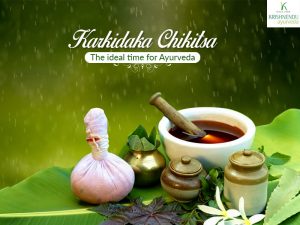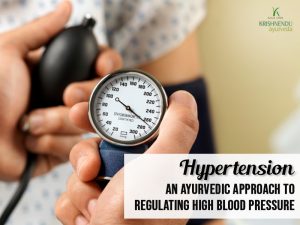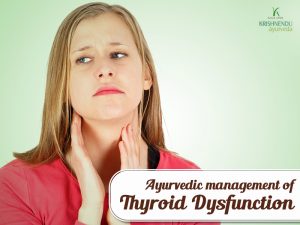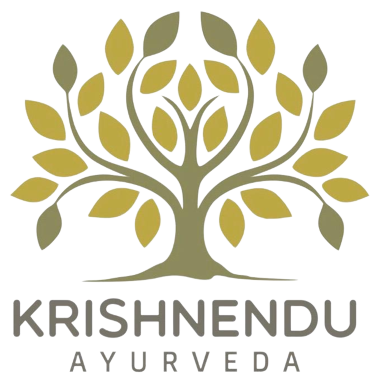Blog

Karkidaka Chikitsa – The ideal time for Ayurveda
Karkidakam is the Malayalam month which falls during the month of July or August and is marked by heavy rains of the Kerala monsoon. According to Ayurveda, this time is characterized with doshic imbalances and low immunity. Karkidaka chikitsa is the Ayurvedic treatments and therapies recommended for the monsoon combined with dietary routine and lifestyle modifications to ward off the imbalances in the body as well as to boost immunity. The vitiation of Vata and Pitta dosha is considered to be the causative factor for various diseases and conditions during the rains. Hence, Ayurveda advices dietary and lifestyle modifications to help balance the vitiated doshas and maintain optimum health during the downpour. Dietary recommendations for monsoon Ayurveda regards Agni or digestive fire as responsible for promoting healthy digestion and assimilation. In monsoon, the aggravation of Pitta dosha causes the digestion to be weak which can lead to various health problems. So, the diet followed in monsoon should be a balanced one which can stimulate Agni and help in healthy digestion. Following are the dietary guidelines recommended by Ayurveda during the rains. Drink lukewarm water throughout the day Prefer foods that are easily digestible, hot & light Consume foods having sour, sweet and salty tastes Include ginger, garlic, black pepper, asafoetida and lemon in diet better digestion Eat cooked vegetables than eating raw salads Karkidaka kanji or medicated porridge with rice and herbs are highly recommended Avoid fried, spicy and uncooked foods Have legumes like moong dal, chickpea, corn, gram flour and vegetables like bottle gourd, snake gourd, okra, etc. Lifestyle advices for monsoon Due to the weak immunity, monsoon calls for proper care to prevent diseases. Here are some lifestyle tips to follow during the monsoon. Panchakarma treatments are highly recommended to boost immunity and to prevent the onset of illnesses. Bath with warm water to curb Vata Keep the body warm with adequate clothing Do not walk barefoot Foot care is important during the rains Practice regular self abhyanga or body massage with oil Do not sleep during daytime to prevent indigestion Change to dry clothes immediately after getting wet in the rain. Avoid over exertion in any form Restrict over exposure to the afternoon sun in the monsoon Ayurvedic treatments during monsoon Undergoing Ayurvedic treatments during the monsoon is highly preferred as the body becomes more receptive of the treatments and medications due to the moist climate’s influence on the body which opens up the pores in the skin. The below Ayurvedic treatments are recommended during the monsoon season- Abhyanga – Ayurvedic full body oil massage is one of the most preferred therapy during the rains to strengthen the body and to boost immunity. It helps get rid of aches and pains in the joints which is common in the monsoon. Abhyanga followed by swedana or sudation help detoxify the body effectively. Swedana – As the monsoon opens up the pores in the skin, the process of inducing steam is beneficial to eliminate toxins and rejuvenate the body. Massage with warm medicated boluses or dry heat treatments are ideal fomentation therapies. Basti – The medicated enema process help detoxify the body and treats the seat of Vata dosha, the colon which aids in pacifying the dosha.




Ayurvedic Treatments and Lifestyle Advices to Manage Vitiligo
Vitiligo, also referred to as leucoderma is a condition where white patches form on the skin due to the depigmentation resulting from the death of melanocytes. These patches can appear anywhere on the body, from the insides of the mouth and nose to the inner layer of the eyeball. The condition is associated to be as an autoimmune disease where the immune system of a person reacts against the body’s organs and tissues. Ayurveda refers to the condition as ‘Shwetakushta’ and considers the vitiation of all the three doshas, mainly the imbalance of Pitta dosha to be the root cause. The aggravated doshas along with the involvement of the lymph and blood causes vitiligo. Risk factors for Vitiligo according to Ayurveda are, Intake of contradictory foods Suppression of natural urges Excess consumption of sour, sweet, salt and pungent foods Excess intake of fresh grains, curd, and fish Ayurvedic treatments for Vitiligo The Ayurvedic line of treatment includes corrective measures to promote healthy digestion, elimination of ama or the accumulated toxins, boosting the immunity and balancing the Pitta dosha. Ayurvedic treatments recommended for treating vitiligo include snehana and swedana (oleation and sudation therapies), shodhana (purification by purgation or emesis) and external application of medicines. Following include the diet and lifestyle advice by Ayurveda for preventing the spread of vitiligo. Include bitter vegetables in diet Restrict sour and tangy fruits, non-vegetarian food, curd and foods that are fermented. Manage stress with yoga and meditation Following a light food diet Adequate hydration of the body Avoid milk and dairy products, flavoured drinks and junk food Drink water kept in copper vessels overnight




Management Of Fibromyalgia Through Ayurveda
Fibromyalgia is a neurosensory condition characterized by widespread pain in the muscles and bones. Also referred to as fibromyositis and fibrositis, the disorder also involves stiffness, multiple tender points in the body, increased sensitivity to painful stimuli, inadequate sleep, etc. Symptoms of Fibromyalgia Fatigue Sleep disturbances Anxiety or depression Chronic muscle pain Stiffness in joints Hypersensitivity to heat or cold Impairment in memory Causes of Fibromyalgia according to Ayurveda Ayurveda regards the root cause of the condition as the vitiation of Vata dosha which affects the muscular tissue or the Mamsa Dhatu. The accumulation of Ama due to the impaired digestion is believed to block the path of Vata resulting in its aggravation. The vitiated dosha gets lodged in the muscles and causes stiffness, pain, tenderness and fatigue resulting in fibromyalgia. Management of Fibromyalgia through Ayurveda Ayurveda recommends management of Fibromyalgia through different approaches that rectify the dosha impairment and prevents the accumulation of Ama. Prevent aggravation of Vata Preventing the causative factors for Vata vitiation is the first step in managing the condition. Incorporating healthy changes in dietary habits, regime and lifestyle would help balance the doshic impairment. Regular practice of pranayama, meditation and yoga are also beneficial for regulating Vata dosha. Ensure digestive health Preventing the formation or accumulation of Ama is vital in managing fibromyalgia to avoid the vitiated Vata dosha getting lodged in the muscles. Restore digestion to normalcy by following healthy eating habits and avoiding unhealthy foods. Addressing the pain Treat the painful areas locally with a warm oil massage accompanied with a steam bath or heat application to promote the flow of Vata and to alleviate the pain. Applying dry heat in sessions followed by oil application and heat again, is advised for stiffness. Treat the seat of Vata Colon is considered the seat of Vata and it gets disturbed due to Vata aggravation. Periodic colon cleanse as advised by the physician is beneficial to maintain balance. The Ayurvedic therapy of Basti which is the medicated emesis is also recommended for acute conditions. Promote sound sleep Shirodhara, the Ayurvedic treatment of caressing the scalp and forehead with gentle streams of warm oil is highly recommended to address the Vata aggravation in the head region, while also to induce a deep sleep. Regular practice of pranayama and meditation is also helpful in promoting a deep relaxation for the body and mind.




Hypertension – An Ayurvedic Approach To Regulating High Blood Pressure
Hypertension, also called as high blood pressure is the elevated pressure in the arteries that causes the heart to work harder to pump through the blood vessels. The normal blood pressure of a healthy individual is 120mmHg systolic and 80mmHg diastolic. When the pressure is at or above 140/90 mmHg, hypertension is considered to be present. The causes of hypertension mainly involve a sedentary and hectic lifestyle combined with unhealthy food habits, obesity, metabolic disorders, excessive consumption of salt and fast foods, smoking and intake of intoxicants and such. Hypertension is a major risk factor for heart attacks and heart failure, stroke, aneurysm of the arteries, chronic kidney diseases and retinopathies, etc. Ayurvedic approach to hypertension Ayurveda correlates hypertension to a condition called Raktagata Vata where vitiated Vata dosha gets accumulated in the Rakta Dhatu or blood and disrupts the circulation. As the Rakta Dhatu and Pitta dosha are also influential to each other, the vitiation of Rakta also vitiates Pitta. Thus, according to Ayurveda, Raktagata Vata is a disorder of blood caused by morbid Vata and Pitta. Ayurvedic treatment approach to hypertension identifies the extent of the dosha vitiation, tissue strength, metabolic errors and also studies the body constitution and the pathological state of the disease to prescribe a treatment module consisting of a Vata-pacifying diet, medicines and lifestyle advises. Ayurvedic treatment options Panchakarma – The primary purification and detoxification procedure in Ayurveda is highly recommended in eliminating the morbid doshas and toxins from the system to cure hypertension and to establish heart health. Virechana – The therapeutic purgation procedure in Ayurveda is advised for eliminating the aggravated Pitta and to correct the metabolism. Virechana also removes the blocks in the cells and blood vessels and restores blood health Vasti – The medicated emesis controls Vayu which is a main causative factor for hypertension. Raktamokshana – Contaminated blood is removed from the blood stream through the bloodletting therapy and clears the blocks in the circulation. Takradhara – The scalp and forehead is caressed with a continuous stream of buttermilk to relieve hypertension, while also being therapeutic to stress, anxiety and tension. Ksheeradhara – The whole body is bathed in streams of medicated milk to cool down both the body and mind which helps lower the blood pressure. Tailadhara – Streams of medicated oil is poured on the body and head to relax the body and to regulate blood pressure.




Effective Ayurvedic Remedies To Manage Sciatica
Sciatica is a painful condition characterized by the inflammation of the sciatic nerves of the leg. It involves pain radiating from the lower back to the back of the legs. Either one or both of the legs can get affected by sciatica and the condition is considered to aggravate with age. The root cause of the condition is often narrowed to the compression of the sciatic nerve due to a protruding vertebral disc in the spine. Spasm of the piriformis muscle in the buttock region, a faulty sitting posture, sleeping in curved position and injury to the lower back are also considered triggering factors for sciatica. Ayurvedic understanding of Sciatica Ayurveda correlates the condition to Gridhrasi which is one among the neuro-muscular diseases caused by the imbalance of Vata dosha. The word Gridhrasi is derived from the Sanskrit word ‘Gridhra’ which means vulture, so as to define the condition characterized by a vulture-like gait due to the slightly curved legs from the severe pain and stiffness. Primarily considered as a Vatavyadhi, the condition presents with the aggravation of Vata dosha due to intake of Vata rich foods, excess consumption of cold, dry, pungent, bitter and astringent food, etc. Ayurveda also considers Vata-Kaphaja Sciatica in which Vata is the main dosha and Kapha is sub dosha and is characterized by indigestion, anorexia, freezing sensation in lower limbs, and heaviness of the leg. Ayurvedic line of treatment for Sciatica includes Vata-pacifying measures along with addressing the toxic build up in the body and followed by measures to restore digestive health. Snehana – Oleation by application or pouring of oil all over the affected area is advised. Swedana – Fogmentation or sudation therapy through Pizhichil, Patra Pinda Sweda, Upanaha Sweda, etc. are beneficial. Virechana – Mild purgation to eliminate toxins. Basti – Medicated enema therapy to treat the seat of Vata dosha. Raktamokshana – Blood-letting therapy to remove impure blood from the bloodstream above or below knee joint. Diet recommendations and lifestyle advices for managing sciatica Include carbohydrates in diet for regular bowel movements for digestive health. Add green leafy vegetables in the diet for fiber intake that is beneficial for proper digestion. Avoid heavy meals that takes long time to digest which exerts pressure on the lower back. When sleeping, lie straight on the back or have the bent knees supported by a pillow. Hot and cold compresses on an alternate basis is recommended for pain relief.




Ayurvedic Management Of Thyroid Dysfunction
Thyroid, the butterfly-shaped endocrine gland situated at the neck that secretes thyroid hormones is highly influential in affecting the metabolism of the body as well as for proper functioning of liver, muscles, heart and brain. Dysfunction of the thyroid glands disables the body’s ability to break down proteins and process carbohydrates and fats, which disrupts the metabolism. Thyroid dysfunction is further categorised as hyperthyroidism and hypothyroidism where the former represents the excess production of thyroxine, the thyroid hormone and the latter is the inadequate secretion of the same. Ayurveda identifies the root cause of thyroid dysfunction as the vitiation of Kapha and Pitta doshas combined with impaired digestive fire Agni. The vitiated doshas disrupts the functioning of thyroid gland and causes hypothyroidism, while the aggravation of Vata and Pitta doshas along with the impaired digestion causes blockages in the minute channels of the body which imbalances the thyroid gland. Ayurvedic approach to Thyroid dysfunction The Ayurvedic treatment of thyroid dysfunction is aimed at controlling the causative factors and enhancing the function of the thyroid glands using medicinal herbs and therapies to balance the doshas along with dietary and lifestyle recommendations. Ayurvedic treatments prescribed according to the type and characteristics of thyroid dysfunction are, Nasya – Nasal administration of medicated oils and powders are recommended to detox, strengthen immunity and to restore balance. Head Massage – Massaging the head with medicinal oils help stimulate the thyroid gland, while also improving blood and lymphatic circulation which is beneficial to thyroid. Vasthi – Warm medicated oil is made to retain over the thyroid or adrenal glands as a therapeutic remedy to thyroid problems. Foot Massage – Massaging specific points on the feet is considered to stimulate the thyroid glands and helps in managing thyroid dysfunction. Shirodhara – Medicated oil is continuous poured over the forehead in thin streams to calm down the system and to enhance the functioning of nervous system, which in turn helps in controlling the release of thyroid hormones. Ayurvedic herbs recommended for thyroid problems are, Kanchanara – Regulates thyroid hormone production and reduces inflammation of thyroid Guggulu – Helps flush out toxins from the system Ashwagandha – Alleviates symptoms of hypothyroidism Brahmi – Thyroid stimulant which increases thyroxin concentration Jatamansi – Helps balance doshas Punarnava – Helps soothe inflammation and numbness of hypothyroidism Yogasanas recommended for thyroid health include, Sarvangasana Matsyasana Pavanmuktasana Viparita Karani Dhanurasana Halasana Surya Namaskar Pranayama for thyroid problems, Ujjayi Pranayama Nadi Shodhana Bhastrika Pranayama Nadi Shodhana Bhramari Pranayama Sheetali Pranayama Sheetkari Pranayama

